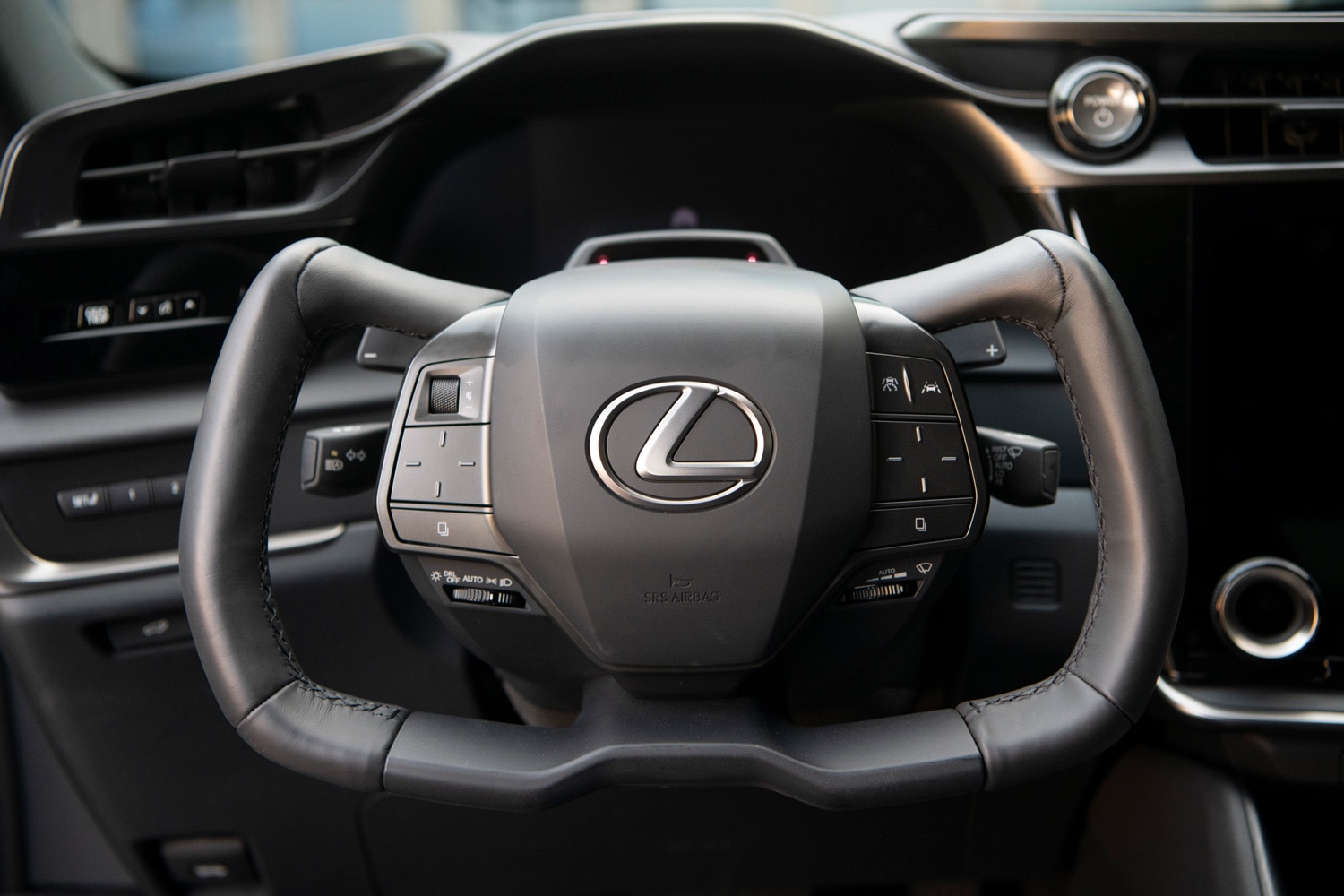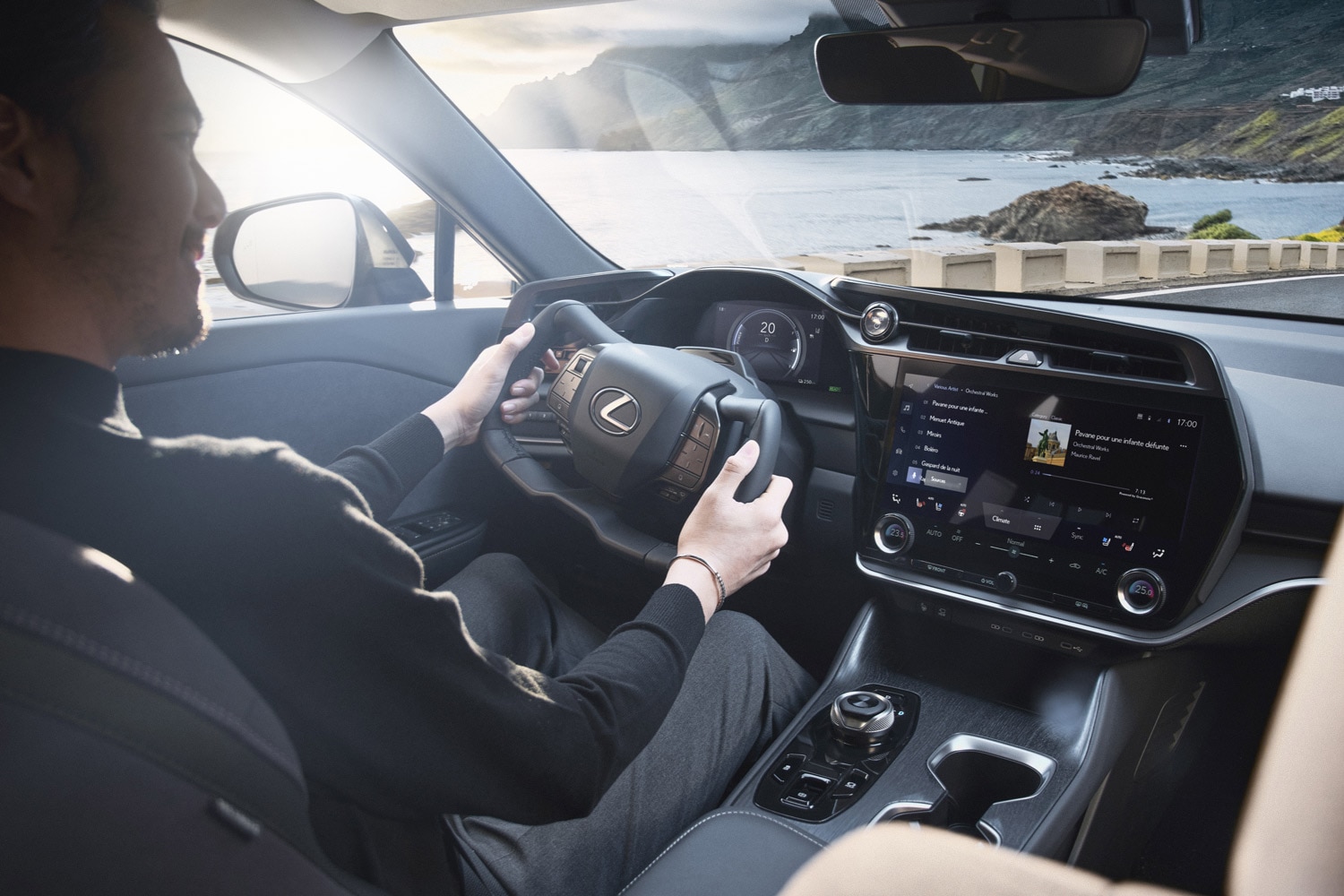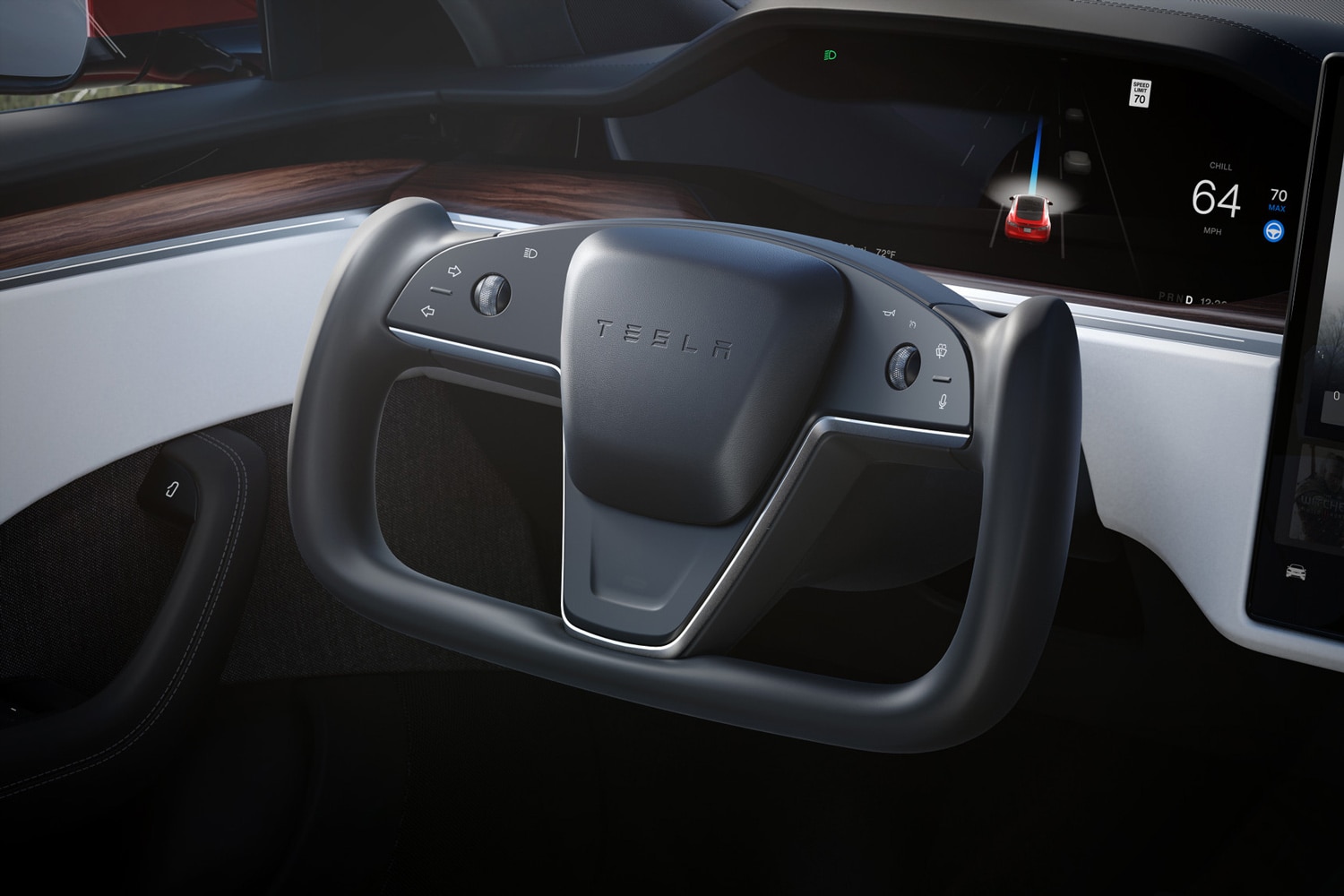What Is a Steering Yoke, and Why Is It Controversial?
Tesla and Lexus are reinventing the steering wheel.
 Lexus
Lexus
Within the past year, Tesla and Lexus have separately introduced a different steering control: the yoke. Common in aviation, a yoke is often U-shaped, with two hand grips connected to a hub. Its use in the Tesla Model S and Model X, and upcoming Lexus RZ electric SUV has provoked puzzlement from customers and derision from enthusiasts.
For the past hundred years, automotive designers have been content to stick with a tried, tested, and true steering interface: the wheel. Although almost every brand has added buttons and other features to it, and some have flattened the bottom of the rim to provide more legroom, the general concept of how to control a car has remained the same. Until now.
Why are these two luxury brands choosing to use a steering yoke? That depends on which company you ask.
 Lexus
Lexus
Steering Yokes Versus Steering Wheels
Flying a plane and driving a car require entirely different ranges of motion, which is why the steering controls have looked different up until now. Yokes make sense in aviation, where a quarter-turn in either direction covers the entire range of steering. From a hard left to a hard right , a pilot can typically rotate the yoke just 180 to 200 degrees.
That’s significantly different from driving a car, which normally requires more than two full rotations—or 720 degrees—of the steering wheel to turn from lock to lock. A circular wheel makes it easy to use a hand-over-hand movement for large steering inputs. A driver can also use a light grip to let the rim slide through their hands coming out of a turn.
If the vehicle is set up to require the traditional two rotations, and you attempt to spin a yoke with steering-wheel-like motions, you’ll quickly find that there’s no natural place for your hands to land as you shuffle the wheel for tight parking lot maneuvers or hairpin turns.
 Tesla
Tesla
One Yoke Is Not Like The Other
What if you could drive a car with smaller steering motions, though? Lexus has introduced a steer-by-wire system in the RZ electric SUV that does just that. Rather than spin round and round, the RZ’s yoke can be turned only 150 degrees in either direction, with a computer interpreting the driver’s inputs and controlling the angle of the front wheels. Imitating a variable-ratio steering system, the front wheels turn faster as the yoke is turned closer to lock. There’s a learning curve to mastering this, but it at least eliminates any hand-over-hand awkwardness.
The Tesla approach isn’t as sophisticated. Like a traditional steering wheel, Tesla's yoke is physically connected to the front wheels, and it takes more than two complete rotations to turn from lock to lock. This translates to a choppier motion versus the smooth spin of a wheel, forcing drivers to remove their hands, change their grip, and cross their arms during tight turns, especially at lower speeds. With such small grips, there’s barely room to grab one side of the yoke with two hands in these situations. Drivers have also reported that Tesla’s handles are uncomfortable to grip and often slip out of their hands.
All of this complication for a problem that had already been solved begs the question, why a yoke at all? Neither company provides a particularly compelling answer. Tesla claims that using one improves visibility (with no wheel blocking the gauge cluster), while Lexus asserts that its steer-by-wire system is more responsive than the conventional way of doing things.
Written by humans.
Edited by humans.
 Benjamin Hunting
Benjamin HuntingBenjamin Hunting is a writer and podcast host who contributes to a number of newspapers, automotive magazines, and online publications. More than a decade into his career, he enjoys keeping the shiny side up during track days and always has one too many classic vehicle projects partially disassembled in his garage at any given time. Remember, if it's not leaking, it's probably empty.
Related articles
View more related articles